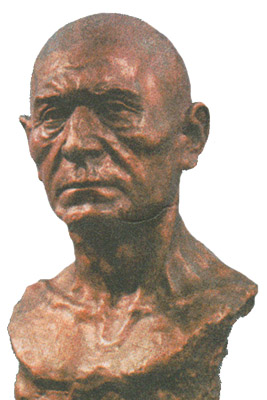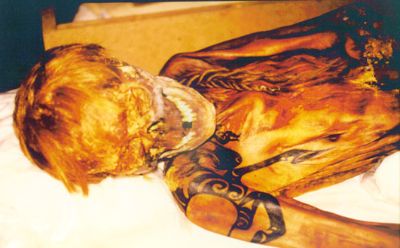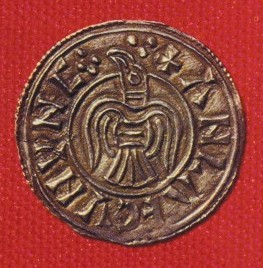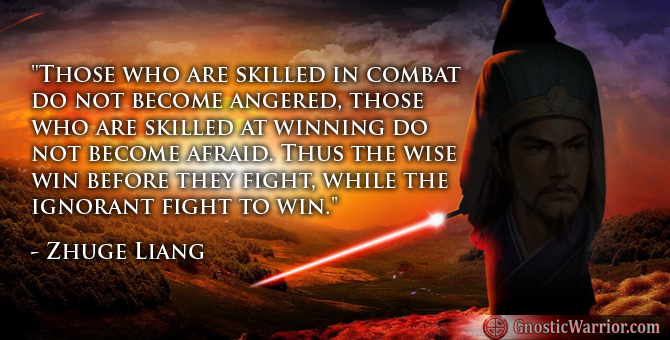 The mysterious origins of the Saxons before they had merged with the Angles and various other tribes to then become Anglo-Saxons, is somewhat of a mystery. A mysterious connection which I have found is in ancient Central Asia, related to a Scythian tribe called the Sacae or Saka and also another long lost tribe known in ancient times by the Chinese as the Wusun or Usun.
The mysterious origins of the Saxons before they had merged with the Angles and various other tribes to then become Anglo-Saxons, is somewhat of a mystery. A mysterious connection which I have found is in ancient Central Asia, related to a Scythian tribe called the Sacae or Saka and also another long lost tribe known in ancient times by the Chinese as the Wusun or Usun.
These two tribes would later merge to then be called the Sacae-Sun or Sako-Usuni, and more commonly known to us today as the “Saxons.” These same Saxons we find several centuries later when they would later be found in Britain, Ireland and Scotland, with many more tribes such as the Angles and Picts.
These tribes of the Saxons would later merge into one tribe that we know as the “Anglo-Saxons.”
It was during the the 7th century B.C. in ancient Central Asia, in approximately what is now modern day Turkestan and China, that here were various ancient peoples who had lived in this region that were certainly not the original inhabitants. There are various historical accounts of foreign tribes that tell us the names of the people who occupied this region. In Chinese literature you will find such names for these tribes as the Wusun (Usun), Jiankuns, Yuechis (Yuezhi or Yue-Tchi), and Se.
The Tall Ones Known as the Wu Suns Come Into Central Asia – “Barbarians who have green eyes and red hair.”
The Wusun (pronounced Oo-soon) whose home was originally in the northwest of China were described in the 7th century commentary to the Hanshu by Yan Shigu, “Among the various Rong in the Western Regions, the Wusun’s shape was the strangest; and the present barbarians who have green eyes and red hair, and are like macaques, belonged to the same race as the Wusun.”
Another description of the Wu Sun can also be found in the book, “Marching Sands” by Harold Lamb, “The ancient Chinese annals,” observed Sir Lionel” observed Sir Lionel tolerantly, “state that the Wusun, the ‘Tall Ones,’ were formidable fighters. The Sacae or Scythians from whom they are descended were one of the conquering races of the world. It is this heritage of strength which has preserved the remnant of the Wusun—for us to find.”
Another account I found says, “Xinjiang, showing the site of Mongghul Kiira (near the Hi [Yili] River), the approximate Wusun territory – The Alans, Ammianus writes, were “tall and handsome [and] their hair inclines to be blond” (31.2.2; see Rolfe 1939, 3:391).
The description given to us in Wikipedia says;
” The Wūsūn (Chinese: 烏孫; literally “Grandchildren of The Crow”) were either an Indo-European speaking or Turkic speaking nomadic or semi-nomadic steppe people who, the Chinese histories say originally lived in western Gansu in northwest China, near the Yuezhi people. After being defeated by the Xiongnu (circa 176 BCE) they fled to the region of the Ili river and (lake) Issyk Kul where they remained for at least five centuries and formed a powerful force.”
Some scholars have proposed that the Wusun may have been identical with the people described by Herodotus (IV.16-25) and in Ptolemy‘s Geography as Issedones. Their exact location of their country in Central Asia is unknown. The Issedones are “placed by some in Western Siberia and by others in Chinese Turkestan,” according to E. D. Phillips.
Herodotus, who allegedly got his information through both Greek and Scythian sources, describes them as living east of Scythia and north of the Massagetae, while the geographer Ptolemy (VI.16.7) appears to place the trading stations of Issedon Scythica and Issedon Serica in the Tarim Basin.
Chinese records first mention the “Ushi” in Andin and Pinlian (modern Pinlian and Guüan in the Peoples Republic of China) between the Lu-hun and Kuyan tribes. The transcription of Ushi means “raven generation”, and is semantically identical with U-sun – “raven descendants”. The presence of a raven as clan totem among the ancient Usuns is beyond doubt. In Usun legend, the ancestors of the Usuns were a raven and a wolf. This is reflected in the Usun-Ashina (Oshin) tamga with an image of raven.
The first historical records concerning the Wusun, name them as a separate and distinct tribe of the Xiongnu confederacy, living on the territory of the modern province of Gansu, in the valley of the Ushui-he (Chinese Raven river). It is not clear whether the river was named after the Usun tribe or vice versa.
Historical records also give us proof of this powerful force of the Wusuns that had went to battle with the Yuechis; “The Yue-Tchi, repulsed by the Wu-Suns in 130 B. C, hurled themselves upon Bactria” (see the notes to p. 119 : 13). “The Sacx were then masters of it and their dispossession resulted in pressing them in part into India where they founded a kingdom and also in part into the Pro-Pamirian valleys, especially that of the Oxus. The Yue-Tchi ruled over central Asia until 425 A. D. They were dispossessed in their turn by the Hoas, or Epthalite Huns” (White Huns).
The Scythians and Saka of the Se Nation – “All Sakai were Scythians, but not all Scythians were Sakai.”
In addition to the Wusuns and Yuechis, there was another or multiple larger tribes that had occupied what the Chinese call the “Se nation”, and these people as whole are identified generally as Scythians, but by the Chinese as the Se. There was another group of Scythians who were different from the other Scyths and whom the Persians and the Greeks had called the Sacae or Sakas. It is said that the Saka period lasted until ca 200 BC when Wusun tribes moved into the area from the east.
The ancient Greek and Roman scholars believed, “all Sakai were Scythians, but not all Scythians were Sakai.”
The term Scythians or Scyths is used to describe various ancient Iranian nomadic people living in Scythia, the region encompassing the Pontic-Caspian steppe and parts of Central Asia throughout the Classical Antiquity. The ancient Persians called all the Scyths Σάκαι (Sacae, Herodotus 7.64). Their principal tribe, the “Royal Scyths” ruled the vast lands occupied by the nation as a whole (Herodotus 4.20), calling themselves Σκώλοτοι (Scōloti, Herodotus 4.6). The term Scythian, like Cimmerian, was used to refer to a variety of groups from the Black Sea to southern Siberia and central Asia.
“They were not a specific people”, but rather a variety of people “, referred to a variety of times in history, and in several places, none of which was their original homeland.” This is key in understanding this time in history and the facts that they were certainly not united as one peoples or tribe at the time. However, they were most likely all of the same blood or very closely related.
The confusion surrounding the Saka is partly due to the Persians, but according to Herodotus; the Persians called all Scythians by the name Sakas. The English word Saxon is derived from Persic word Sacae-sun or “Sak,” which means dog. The Persians who had admired the leadership of all Scythians tribes by naming them the Sacae. The Sakai or Sakas and Sacse, Saha, Sahia, of India; or the Median Straxa, are all mutations of this same word Sak.
Albinus says, “The Saxons were descended from the Ancient Sacae (the Sakas) of Asia, and that eventually they were called Saxons.” Herodotus had said that the Persians gave the name of Sacae or Sacans to all the Scythians. Pliny says that the Sakai, who settled in Armenia, were named Sacassani. Ptolemy also mentions a Scythian people sprung from the Sakai, by the name of Saxones.”
This tells us that historians back then and the Saka themselves were considered to be a separate tribe from the other Scythian tribes, and this could be due to the Saka having other tribal and/or blood alliances that would have made the Saka different based on DNA and that they were possibly related to the other Scythians, but separate by race, customs, tribal alliances and destiny.
Sakas and Wu Suns, the Saka-Suns or Saxones Form Various Tribes
The facts are that the Scythians, Saka and Wu Suns were the most formidable tribes in this area of Central Asia at the time. You will find that when you combine Sacae or Sakas with the Wu Suns you get the Sacae-Suns or Sakas-Suns. The Sacae-Suns or Saka-Suns sounds very familiar to the Saxons which I believe to be the true origins of the English name “Saxones or Saxons.” The Wu Suns were the race who the Chinese had called the “tall ones” and who had blue or green eyes with blonde or white hair and white skin.
In the book titled China’s Last Nomads: The History and Culture of China’s Kazaks Page 33; we are given an account of this merger and also the latter tribes formed from this same said union; “Wusun people moved west, to the Hi River valley, around the third century B.C. Here they merged with the Saka, known in … The Wusun-Saka tribes of this area include the Jersak, Bessak, Bersak, and Kazsak, the name of the latter tribe…”
The Kazsaks were known as a great Tartar tribe who then mingled with the Kalrauk and Kirgis or are the same tribe. They are either related to who Chinese sources call the Jiankun peoples. According to the Historical Book of the Tang Dynasty, “the Jiankun people are tall and have white hair, white skin and green eyes.” Today the Jiankun are known today as the Kyrgyz (also spelled Kirgiz, Kirghiz) who are a Turkic people living primarily in Kyrgyzstan. The word “Kyrgyz” is derived from the Turkic word “forty”, with -Iz being an old plural suffix, referring to a collection of forty tribes. Kyrgyz also means “imperishable”, “inextinguishable”, “immortal”, “unconquerable” or “undefeatable”,
The Jiankun or Kyrgyz were rather strong in the third century when they were neighbors of the Wusun. As stated above, the Jiankun were said to be tall and have white hair, white skin and green eyes. They were also described in Tang Dynasty texts as having “red hair and green eyes”, while those with dark hair and eyes were said to be descendants of a Chinese general Li Ling. This description is very similar to that given to us of the Wusuns which tells me they were certainly either related or the same peoples. On Wikipedia they are described as the early Kyrgyz people, known as Yenisei Kyrgyz or Xiajiasi (黠戛斯), first appear in written records in the Chinese annals of the Sima Qian‘s Records of the Grand Historian (compiled 109 BC to 91 BC), as Gekun or Jiankun (鬲昆 or 隔昆).
In the 18th and 19th century European writers used the word “Kirghiz” (the early Anglicized form of the contemporary Russian “киргизы”) to refer not only to the people we now know as Kyrgyz, but also to their more numerous northern relatives, the Kazakhs. When distinction had to be made, more specific terms were used: Burut (буруты), Kara-Kirghiz (кара-киргизы) or “Dikokamennye Kirgizy” (дикокаменные киргизы) for the Kyrgyz proper, and Koisaks for the Kazakhs.
Before the Time of the Scythians, the Hittites Ruled This Land
If you study history before these dates and these later peoples called the Scythians or Scyths who came on the scene, you will find that this area and its kingdoms were founded by one huge tribe that had one of the largest empires that had rivaled or surpassed the Egyptians. These people were called the Hittites. The Scythians seem to be a hybrid tribe and race that had descended from the original Hittites who had originally occupied this region for thousands of years prior to when the Scythians or that name came on to the scene.
Who the Chinese call the Se, are the same people the Greeks had named the Sakas. The Sakas were of Scythian descent, and the Scythians I believe I can prove descend from the Hittites whom in turn the Sakas and Saxons would also be descendants of as well. Herodotus tells us that the Sakas had “high caps tapering to a point and stiffly upright.” Asian Saka headgear is clearly visible on the Persepolis Apadana staircase bas-relief – high pointed hat with flaps over ears and the nape of the neck. The Hittites for whom we now have a tremendous amount of archaeological evidence also had worn these exact same tall pointed caps or hats. Many depictions of Hittite men with pointed hats and shoes with curled-up toes have been found in many locations in modern day Turkey.
In addition, there are also many references to the Hittites that have been found and translated in Egyptian inscriptions that describe them as powerful neighbors, who wore boots with turned-up toes, were fond of silver, and and at times they were great enemies of the Pharaohs. This was up until a peace treaty was concluded between Egyptian Pharaoh Ramesses II and Hittite King Hattusili III, that the Egyptians and Hittites made an “eternal treaty” of “peace and brotherhood for all time.”
I would assume since we hear virtually nothing of the Hittites from the ancient Greeks, that they either did not know of the Hittites, or they simply did not know how to read Egyptian or Hittite heliographs at the time. This would make perfect sense. In any event, we do have Greek historian Herodotus describing the Sakas with “high caps tapering to a point”, and we have a tremendous amount of actual science from both the Egyptians and the actual Hittites themselves that they had also worn pointed caps.
A Possible Wusuns, Sakas, Hittite and Amorite Connection to the Bible
Most modern day stories that we have of these peoples come from the East where they appear to have had a significant impact in this region in the time of the Old Testament and also the beginning of the New Testament. However, you will not find the name of “Wusuns” in the bible today or any religious historical documents. They seem to have just disappeared off the face of the earth, leaving very little evidence behind.
The presence of a possible Nordic type race that was tall, fair skinned and had blue eyes can also be found among the biblical Amorites, that I believe also makes a possible connection to whom the Chinese depicted as the Wusuns. In addition, the Wusun appear to sound very similar to white Syrians who were said to be descendants of the Hittites and may have also been descendants of the Amorites. The white Syrians were also generally tall, with white or blonde hair and light blue or even grey eyes. This possible connection to the Wusuns places them right in the heart of biblical history, and also in the location of these stories in connection to the Amorites who were said to be as “tall as cedars.”
The historical accounts that I have given above of these mysterious peoples describe them with such terms as the “Green Eye Devils,” the tall ones, and also the blue-eyed, red-bearded people, which gives us a clue how so-called European DNA was infused into these regions of the world. The descriptions of the tribe of the Wusuns and also the historical accounts of the merger with the Sakas, gives us researchers clues to not only what race these peoples may have been, but also the origins of the tribe known as the Saxons who later went on to help shape much of Europe and the west as we know it today.
In closing, here is a bible passage to ponder until my next article under Ezekiel 16:3 – “And say, Thus said the Lord GOD to Jerusalem; Your birth and your nativity is of the land of Canaan; your father was an Amorite, and your mother a Hittite.”
In my next article I would like to explore this possible connections of the Wu Suns and Saxons with the biblical Hittites and Amorites.
IMAGE CREDIT;
Ancient Üysin – 3-1 centuries BCE Taldıqorğan region in Jetisu. Reconstruction by Shayahmetov

Moe is the founder of GnosticWarrior.com. He is a father, husband, author, martial arts black belt, and an expert in Gnosticism, the occult, and esotericism.

![How the South Saxons received Eadbert and Eolla, and the West Saxons, Daniel and Aldhelm, for their bishops; and of the writings of the same Aldhelm [705 A.D.] | Book 5 | Chapter 17 How the South Saxons received Eadbert and Eolla, and the West Saxons, Daniel and Aldhelm, for their bishops; and of the writings of the same Aldhelm [705 A.D.] | Book 5 | Chapter 17](https://www.gnosticwarrior.com/wp-content/plugins/contextual-related-posts/default.png)



This is another article that was published on the origin of the Irish that could possibly interest you.
http://londonprogressivejournal.com/article/view/2682/iran-as-the-historical-tricontinental-bridge-and-ireland-an-ethnocultural-and-etymological-interconnectedness
The Saka were different from the other Scythians because they were descendants of Shem. The other Scythians were descendants of Japhet. It says in the Bible that “the children of Japhet will dwell in the tents of Shem” which is what happened after some of the ten northern tribes of Israel had escaped their Assyrian captors and traveled north beyond the Caucasus Mountains and into Scythia circa 710BC. Saka = Saxons = Isaacs Sons.
Sharon Turner’s analysis of shared words between Old Iranian and the proto- Saxon language include the following: am =Iam,Arian=tohonor,Ende=toend, Bar = a load, Bradar = brother, Svestar = sister, Bedroz = a present, Bysgo = Busi- ness, Bidari = vigilance, Murdan = to die, Nah = not, Isa = ice, Dar = door, Guftan = speech, to relate, Na = no, Gers, grass, Lippa = lip, Sakht = violent, stubborn, Sorg = sorrow, grief, Tundar = thunder. There are of course Iranian languages today which have words with direct Germanic equiva- lents such as the Kurdish words Gama = Game, Mara = marry, Mong = moon, and Firo = free of charge.
It may interest readers that the older genera- tion Scots, who like the Welsh are descendants of the ancient Celts of Britannia, referred to the Saxons as the “Sassan-ach”. This raises questions as to the striking parallels between this term and “Sassan” and “Sassanian” (pertaining to the Sassanian dynasty).
Here’s a link to a very comprehensive paper written on the subject matter in 2018.
https://www.academia.edu/36942853/Farrokh_K._2018_._Germania_Vikings_Saxons_and_Ancient_Iran._Persian_Heritage_90_pp.28-30